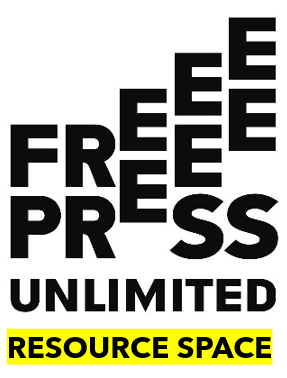There is a perceived tension in the practice of professional journalism on the one hand and advocating for political and policy outcomes on the other. Sometimes journalism is combined with advocacy work, where content is produced around certain societal issues and sometimes collaboration is sought with civil society actors. This non-profit work often is funded by private foundations (and is distinct from media for development which is more about conveying messages about specific development issues).
While combining the two is a valid way to put societal issues on the political agenda through the media, it will sometimes draw criticism from journalists with a more purist view on journalism, who underscore the need for journalists to remain independent and committed to fair and balanced reporting while keeping moralism and judgement at bay. Also, the push from donors to seek impact from non-profit journalism and investigative reporting can muddle the distinction between advocacy and journalism.
In the past decade, a new strand of journalism has emerged that focuses on how social problems can be addressed and what evidence-based solutions are available – as opposed to traditional forms of news production and beat journalism. Often referred to as solutions or constructive journalism and offered as a skill in J-schools , it is characterised by an approach that analyses and reports on forgotten and/or complex social and environmental issues and how progress can be made.
Examples of constructive journalism projects at Free Press Unlimited:
- Lost in Europe. By means of investigation, journalists attempt to discover what happened to migrant children that have disappeared in Europe and contribute to a structural solution to this problem by exposing the causes and making those responsible aware of this problem. Free Press Unlimited has delivered expertise in setting up whistleblower platforms to support the investigative journalists of Lost in Europe.
- Investigating with Tempo. In 2016, Tempo Institute and Free Press Unlimited designed “Investigating with Tempo”. In multiple rounds, talented journalists from local media based outside the capital were selected for a six-month fellowship between 2016 and 2020, during which they worked towards publishing an in-depth investigative story in Tempo Magazine, mentored by senior journalists of the Tempo newsroom. The expertise and knowledge of local CSOs, local journalists associations and media and universities was part of the design as they helped with the selection of story ideas, provided access to data on certain topics and lobbied and advocated for change once stories were published.
Read more
ProPublica published a white paper in 2013 that contains an excellent discussion of the relationship between different types of journalism and advocacy and the search for story impact:
Non-Profit Journalism. Issues Around Impact, especially pp. 10-13.
In 2020, Columbia University students and the Bill & Melinda Gates Foundation’s Global Media Partnerships published a report researching four different partnerships between media and advocacy groups on gender in the media, governmental corruption, misinformation and environmental journalism across the globe between media and advocacy groups:
“Calling for Coalitions: Building Partnerships between Journalists and Advocates”
This 2018 academic paper examines the normative role of constructive journalism and the tension that arises within metajournalistic discourse. “[P]roponents of constructive journalism regularly distance themselves from advocating for social good and claim to objectively cover solutions without endorsing them. This strategic rhetoric signals an attempt to draw a sharp line between constructive journalism and advocacy, and to situate constructive journalism within the boundaries of a traditional monitorial role of journalism.”
Tanja Aitamurto & Anita Varma (2018): The Constructive Role of Journalism,Journalism Practice
